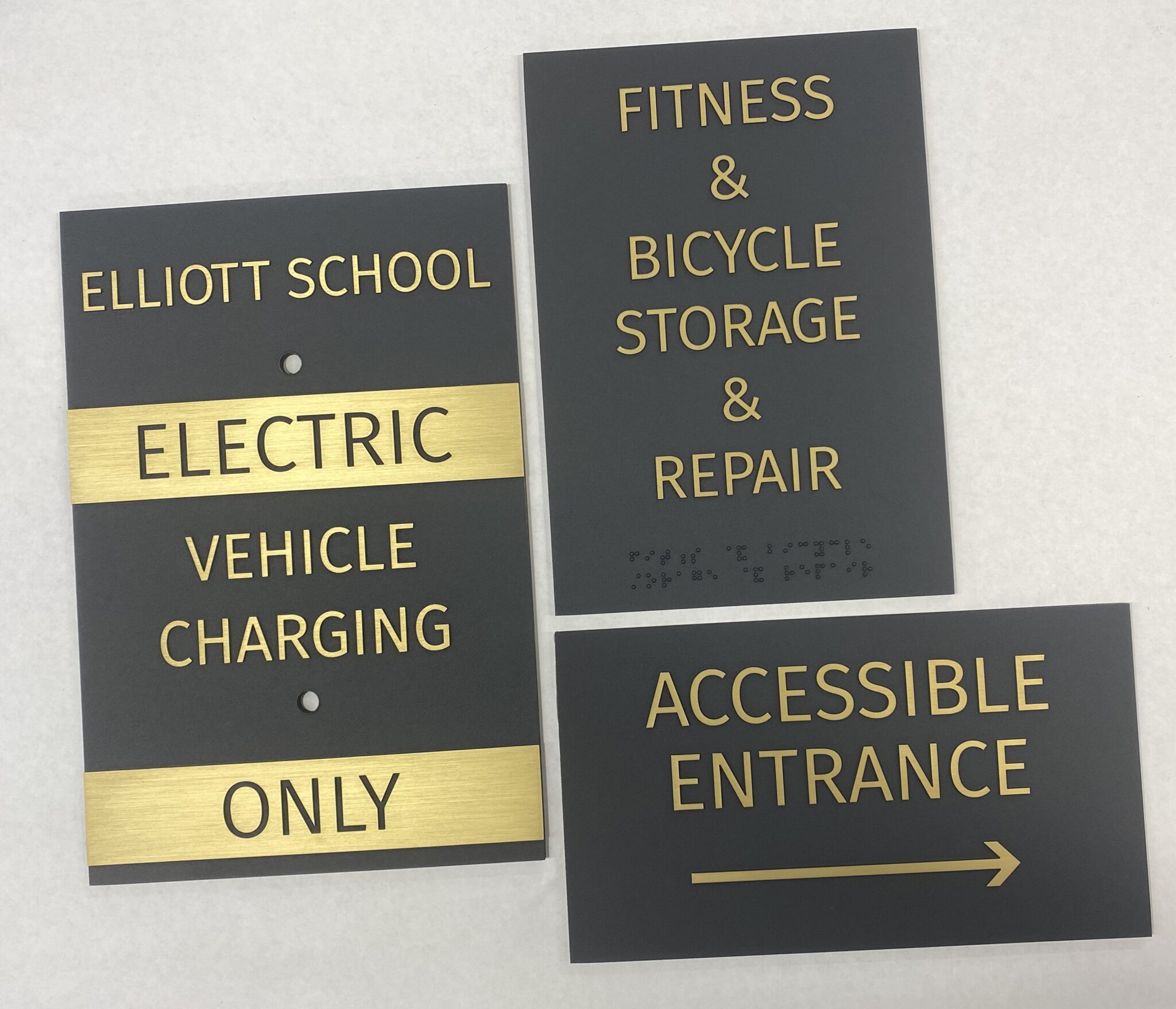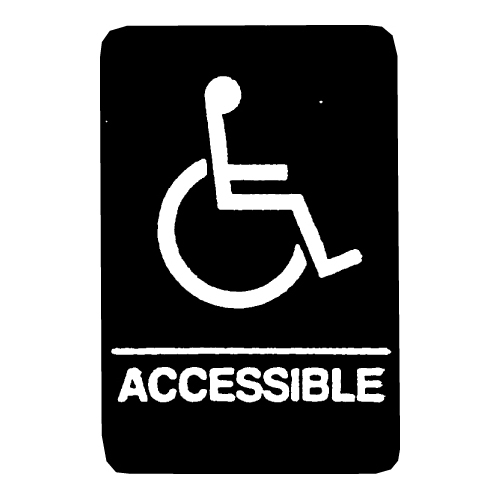The Advantages of Using Top Notch ADA Signs in Your Organization
The Advantages of Using Top Notch ADA Signs in Your Organization
Blog Article
Checking Out the Secret Functions of ADA Indications for Boosted Accessibility
In the realm of access, ADA signs offer as silent yet powerful allies, making certain that areas are comprehensive and navigable for people with disabilities. By incorporating Braille and tactile aspects, these signs damage barriers for the aesthetically damaged, while high-contrast color schemes and legible fonts cater to diverse visual needs.
Relevance of ADA Compliance
Guaranteeing compliance with the Americans with Disabilities Act (ADA) is crucial for fostering inclusivity and equal gain access to in public rooms and workplaces. The ADA, enacted in 1990, mandates that all public centers, employers, and transportation solutions suit people with impairments, ensuring they take pleasure in the very same rights and opportunities as others. Compliance with ADA requirements not just meets lawful obligations but likewise improves a company's online reputation by demonstrating its commitment to diversity and inclusivity.
One of the key aspects of ADA compliance is the application of easily accessible signs. ADA indications are created to make certain that people with disabilities can easily navigate through spaces and buildings. These signs must adhere to specific standards regarding dimension, typeface, shade comparison, and placement to guarantee visibility and readability for all. Correctly executed ADA signage aids remove obstacles that people with impairments frequently experience, thus promoting their freedom and self-confidence (ADA Signs).
Furthermore, sticking to ADA guidelines can reduce the risk of lawful consequences and possible penalties. Organizations that stop working to abide by ADA standards may encounter penalties or legal actions, which can be both damaging and economically burdensome to their public picture. Hence, ADA compliance is indispensable to promoting a fair environment for every person.
Braille and Tactile Elements
The consolidation of Braille and tactile aspects right into ADA signs embodies the principles of availability and inclusivity. It is usually positioned below the matching text on signage to ensure that individuals can access the info without aesthetic aid.
Responsive components expand past Braille and include increased symbols and characters. These components are designed to be noticeable by touch, permitting individuals to identify room numbers, restrooms, leaves, and various other essential locations. The ADA sets particular guidelines regarding the dimension, spacing, and placement of these tactile components to maximize readability and make sure consistency throughout different environments.

High-Contrast Color Systems
High-contrast shade schemes play a crucial function in enhancing the visibility and readability of ADA signage for people with visual problems. These schemes are vital as they make the most of the distinction in light reflectance between text and history, making sure that signs are conveniently discernible, also from a range. The Americans with Disabilities Act (ADA) mandates the usage of certain color contrasts to fit those with minimal vision, making it a vital aspect of conformity.
The efficacy of high-contrast colors exists in their capacity to stand apart in numerous lighting problems, consisting of dimly lit atmospheres and locations with glare. Normally, dark text on check this a light background or light message on a dark history is employed to accomplish optimum comparison. For instance, black message on a yellow or white background supplies a raw aesthetic difference that helps in quick recognition and understanding.

Legible Fonts and Text Size
When taking into consideration the layout of ADA signs, the option of clear fonts and appropriate message dimension can not be overstated. The Americans with Disabilities Act (ADA) mandates that fonts must be not italic and sans-serif, oblique, manuscript, extremely decorative, or of unusual kind.
According to ADA guidelines, the minimal text elevation ought to be 5/8 inch, and it needs to boost proportionally with viewing range. Consistency in message size adds to a natural visual experience, aiding people in browsing settings effectively.
Furthermore, spacing between letters and lines is indispensable to legibility. Ample spacing avoids characters from showing up crowded, enhancing readability. By sticking to these criteria, designers can dramatically enhance access, guaranteeing that signs offers its intended function for all people, no matter their aesthetic capacities.
Effective Positioning Techniques
Strategic positioning of ADA signs is important for making the most of availability and ensuring compliance with legal criteria. Effectively positioned indications direct individuals with specials needs properly, facilitating navigation in public areas. Secret factors to consider consist of presence, elevation, and closeness. ADA standards stipulate that signs should be mounted at a height between 48 to 60 inches from the ground to guarantee they are within the line of view for both standing and seated people. This standard height range is critical for inclusivity, enabling wheelchair customers and people of differing elevations to gain access to info effortlessly.
In addition, indicators have to be put nearby to the latch go now side of doors to permit simple identification prior to entrance. This placement aids people locate rooms and areas without obstruction. In instances where there is no door, indications ought to be positioned on the nearby nearby wall surface. Consistency in indication positioning throughout a center enhances predictability, lowering complication and improving total user experience.

Final Thought
ADA indicators play an essential role in advertising access by integrating attributes that address the demands of individuals with handicaps. These aspects collectively cultivate a comprehensive setting, underscoring the importance of ADA compliance in making sure equal gain access to for all.
In the world of ease of access, ADA signs offer as silent yet powerful allies, making certain that areas are navigable and comprehensive for individuals with impairments. The ADA, passed in 1990, mandates that all public centers, companies, and transportation solutions fit people with disabilities, guaranteeing they enjoy the very same rights and chances as others. ADA Signs. ADA indications are made to make certain that people with disabilities can quickly navigate via areas my company and structures. ADA guidelines state that indications need to be mounted at an elevation between 48 to 60 inches from the ground to guarantee they are within the line of view for both standing and seated people.ADA signs play an important duty in advertising access by incorporating attributes that resolve the requirements of people with disabilities
Report this page